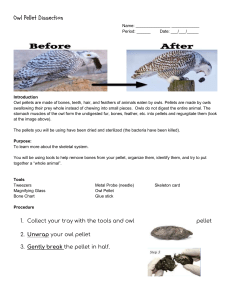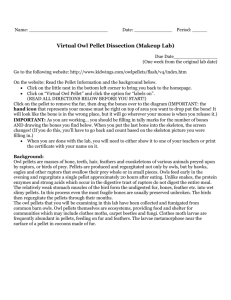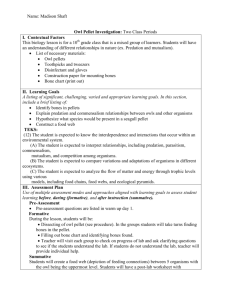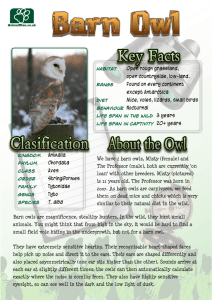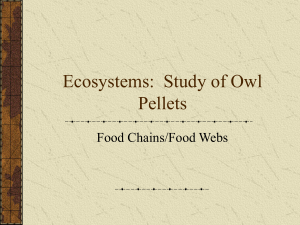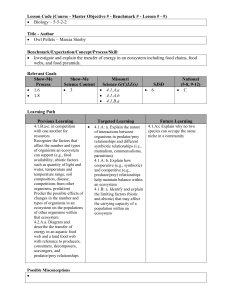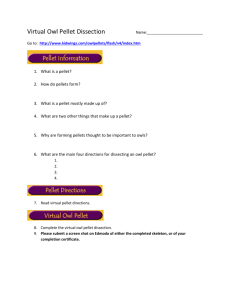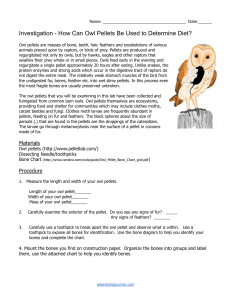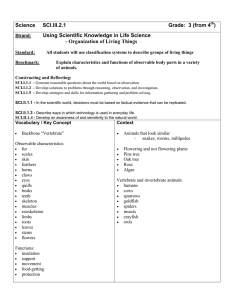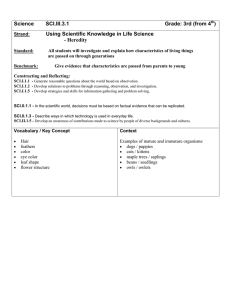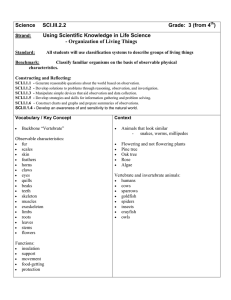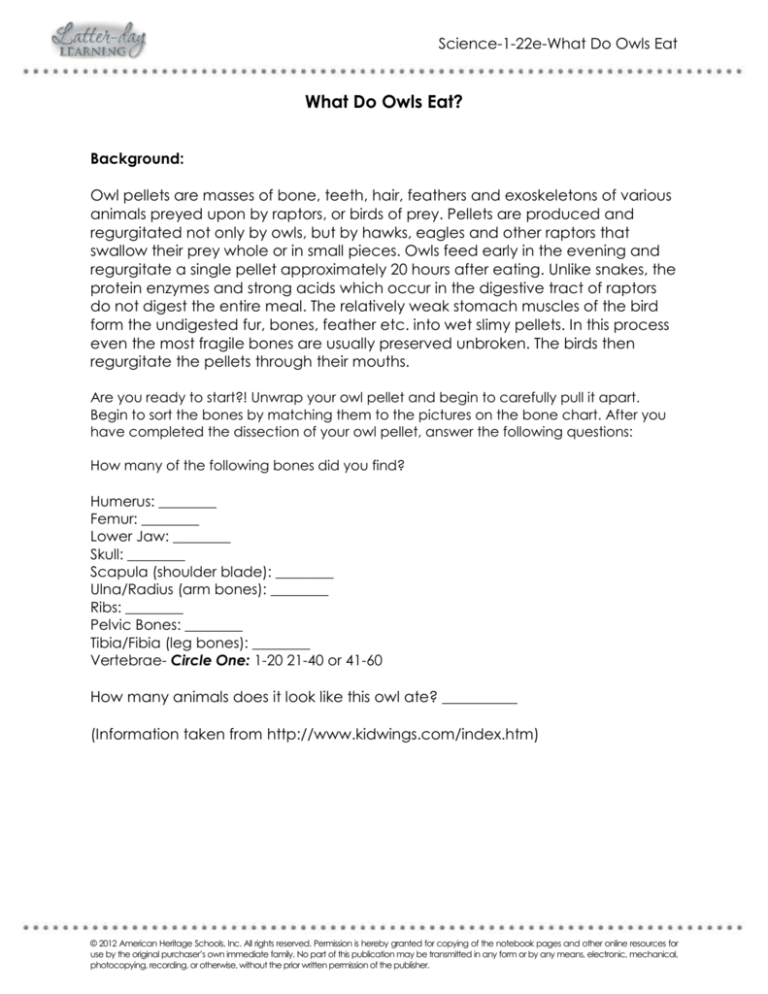
Science-1-22e-What Do Owls Eat
What Do Owls Eat?
Background:
Owl pellets are masses of bone, teeth, hair, feathers and exoskeletons of various
animals preyed upon by raptors, or birds of prey. Pellets are produced and
regurgitated not only by owls, but by hawks, eagles and other raptors that
swallow their prey whole or in small pieces. Owls feed early in the evening and
regurgitate a single pellet approximately 20 hours after eating. Unlike snakes, the
protein enzymes and strong acids which occur in the digestive tract of raptors
do not digest the entire meal. The relatively weak stomach muscles of the bird
form the undigested fur, bones, feather etc. into wet slimy pellets. In this process
even the most fragile bones are usually preserved unbroken. The birds then
regurgitate the pellets through their mouths.
Are you ready to start?! Unwrap your owl pellet and begin to carefully pull it apart.
Begin to sort the bones by matching them to the pictures on the bone chart. After you
have completed the dissection of your owl pellet, answer the following questions:
How many of the following bones did you find?
Humerus: ________
Femur: ________
Lower Jaw: ________
Skull: ________
Scapula (shoulder blade): ________
Ulna/Radius (arm bones): ________
Ribs: ________
Pelvic Bones: ________
Tibia/Fibia (leg bones): ________
Vertebrae- Circle One: 1-20 21-40 or 41-60
How many animals does it look like this owl ate? __________
(Information taken from http://www.kidwings.com/index.htm)
© 2012 American Heritage Schools, Inc. All rights reserved. Permission is hereby granted for copying of the notebook pages and other online resources for
use by the original purchaser’s own immediate family. No part of this publication may be transmitted in any form or by any means, electronic, mechanical,
photocopying, recording, or otherwise, without the prior written permission of the publisher.
Science-1-22e-What Do Owls Eat
Additional optional questions for older children:
1. Are owls producers or consumers? Explain your answer.
______________________________________________________________________________
______________________________________________________________________________
______________________________________________________________________________
______________________________________________________________________________
2. Are owls carnivores or herbivores? How can you tell?
______________________________________________________________________________
______________________________________________________________________________
______________________________________________________________________________
______________________________________________________________________________
3. What do we know about the digestive system of an owl based upon the pellets?
(For example, is it strong or weak? What is it able to digest? What is it not able to
digest? Hint: read the background at the beginning.)
______________________________________________________________________________
______________________________________________________________________________
______________________________________________________________________________
______________________________________________________________________________
4. Other types of birds form pellets. What would you expect to find in the pellet of a
seagull? Hint: Think about a seagull’s diet based on their location near beaches.
______________________________________________________________________________
______________________________________________________________________________
______________________________________________________________________________
______________________________________________________________________________
© 2012 American Heritage Schools, Inc. All rights reserved. Permission is hereby granted for copying of the notebook pages and other online resources for
use by the original purchaser’s own immediate family. No part of this publication may be transmitted in any form or by any means, electronic, mechanical,
photocopying, recording, or otherwise, without the prior written permission of the publisher.

